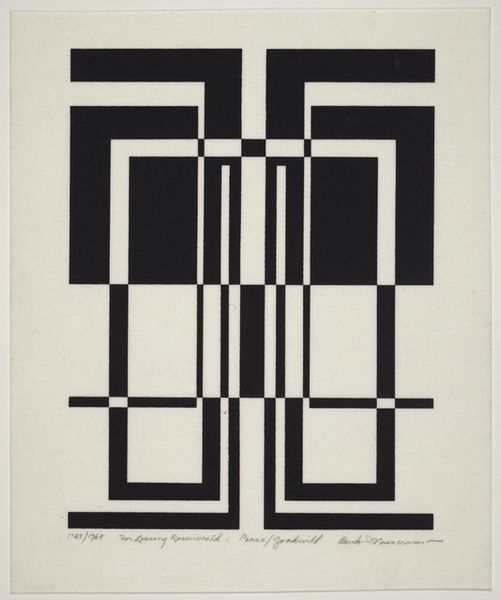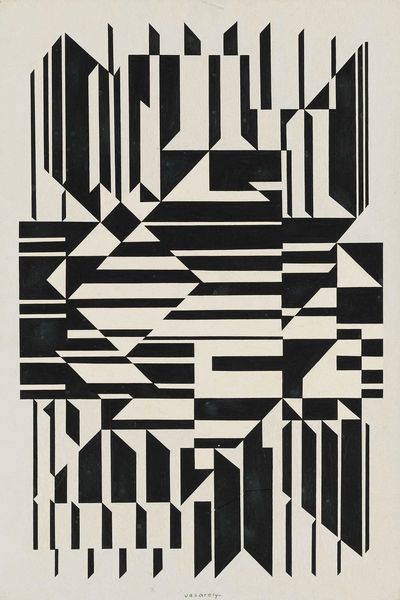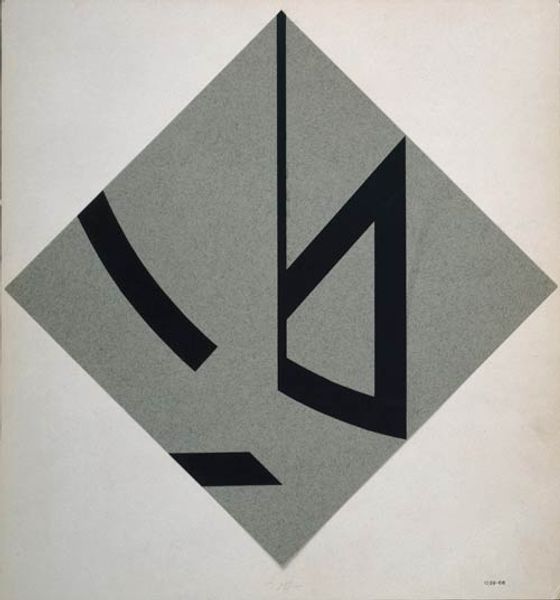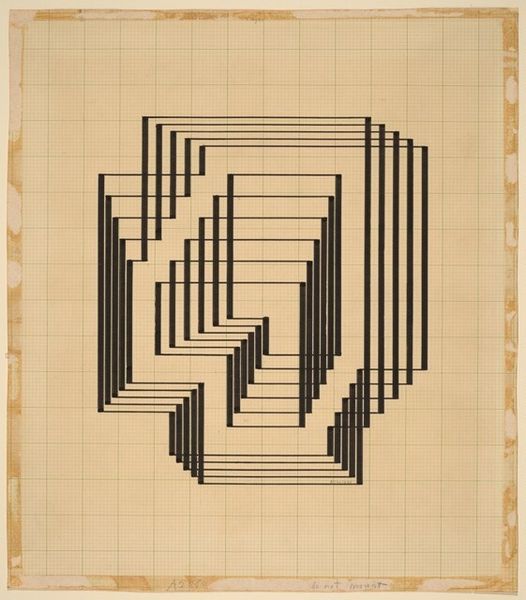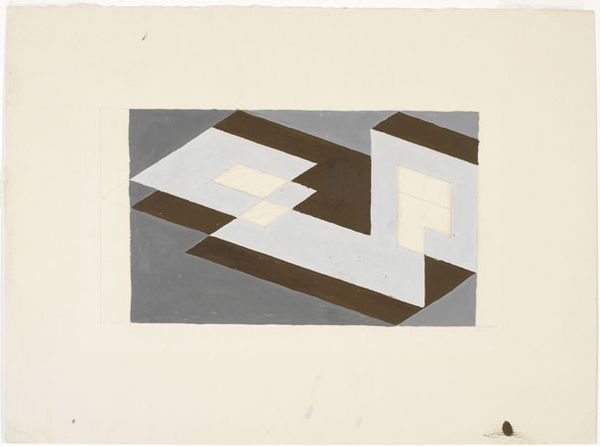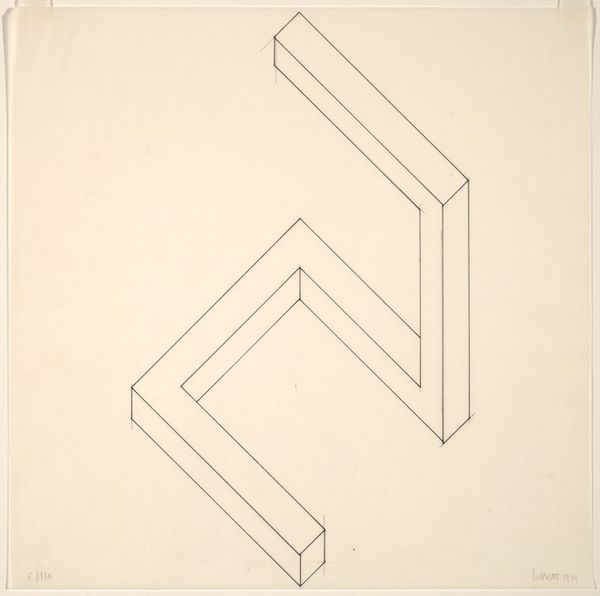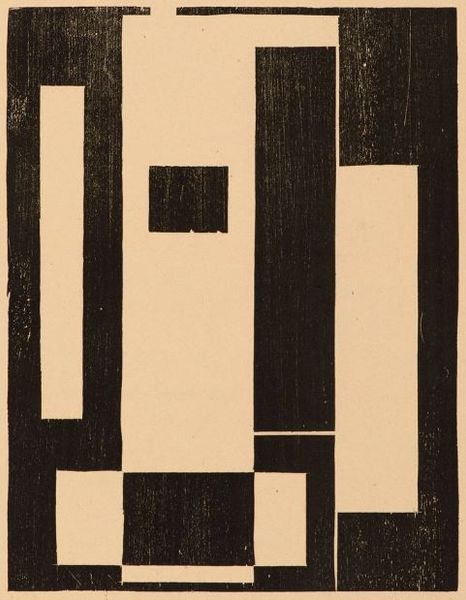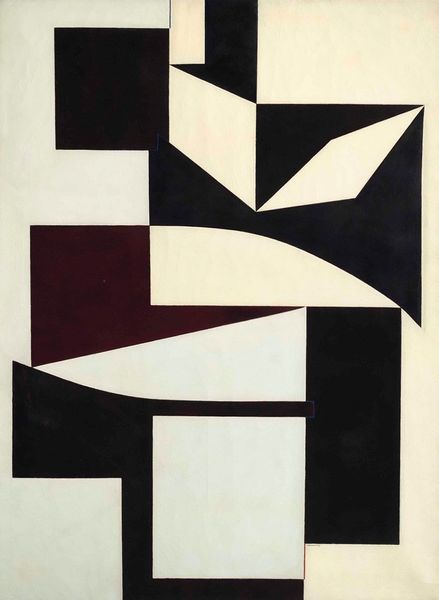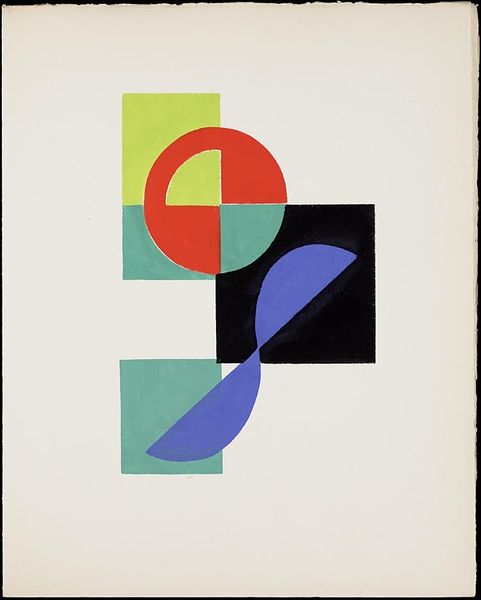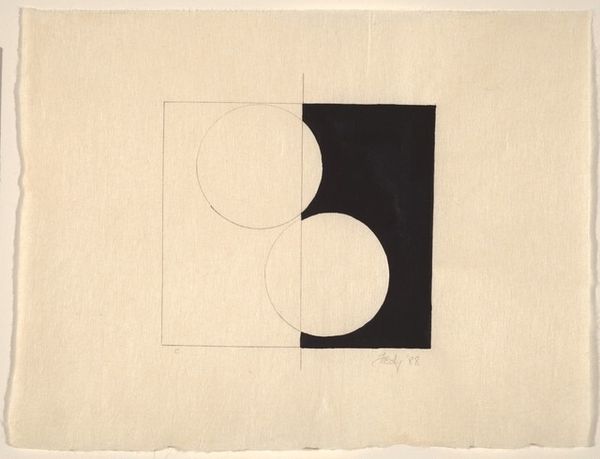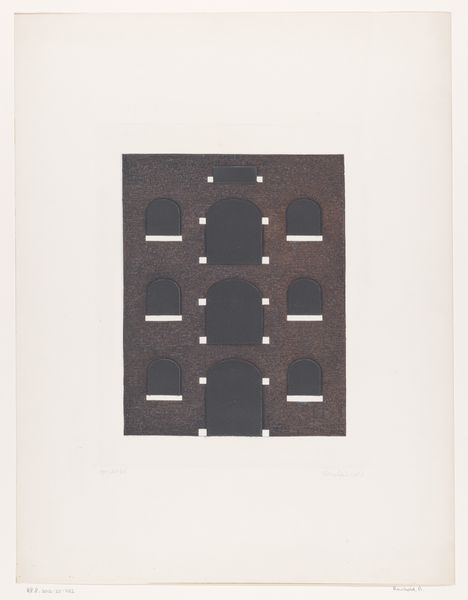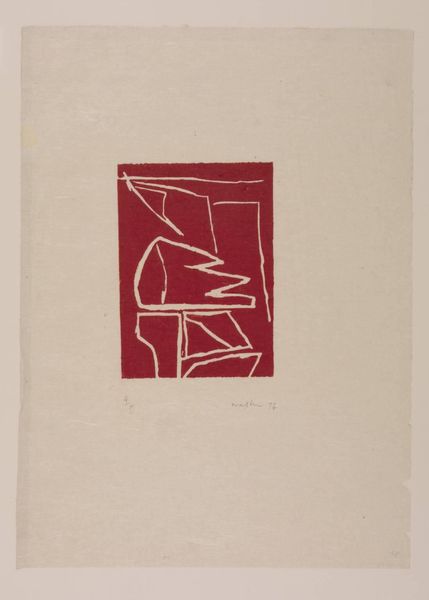
#
op-art
# print
#
op art
#
pop art
#
geometric
#
abstraction
Copyright: National Gallery of Art: CC0 1.0
Editor: Here we have Burton Wasserman’s “Untitled” print, created between 1971 and 1972. The stark black and white geometric shapes are eye-catching and somehow soothing, despite the sharp angles. What strikes you about the work? Curator: Formally, the power resides in the interplay between positive and negative space. Wasserman's strategic arrangement of geometric shapes--primarily triangles and parallelograms--yields a compelling optical push and pull. Note the dynamism achieved through the stark contrast in value and the figure-ground relationship: do you perceive a stable form or a field of fluctuating shapes? Editor: I can't quite decide. I keep shifting between seeing it as a solid object and a collection of shapes. How does this relate to op art? Curator: The Op Art movement thrived on visual illusions, disrupting the viewer's perception through calculated manipulation of line, color, and form. This work relies on fundamental geometric forms that create a subtle vibrational effect without using color at all. Observe how your eye is led around the composition by the repetition and variation of the shapes. Editor: It’s interesting that it still feels so modern despite being made over 50 years ago. I didn't initially appreciate how much the limited palette emphasizes the shapes themselves. Curator: Exactly. By reducing the color palette to its most fundamental elements, the viewer is forced to focus solely on form and its internal relationships, activating a dialogue between geometric purity and perceptual instability. What has this analysis taught you? Editor: I see now that this artwork has less to do with a representational subject and more with pure visual sensations achieved through manipulating form. Thanks!
Comments
No comments
Be the first to comment and join the conversation on the ultimate creative platform.
